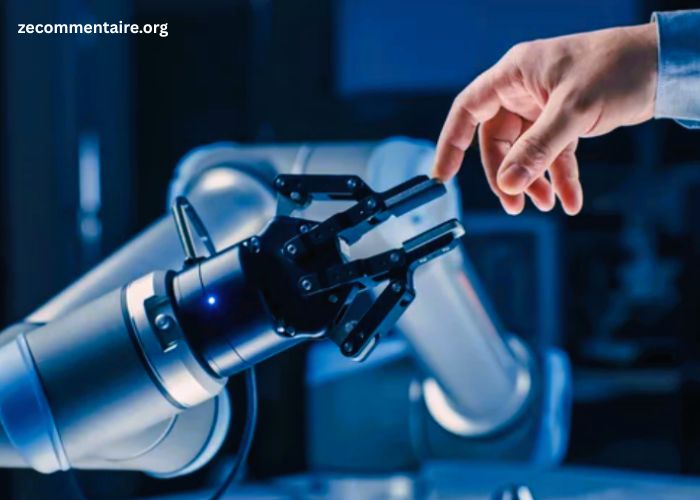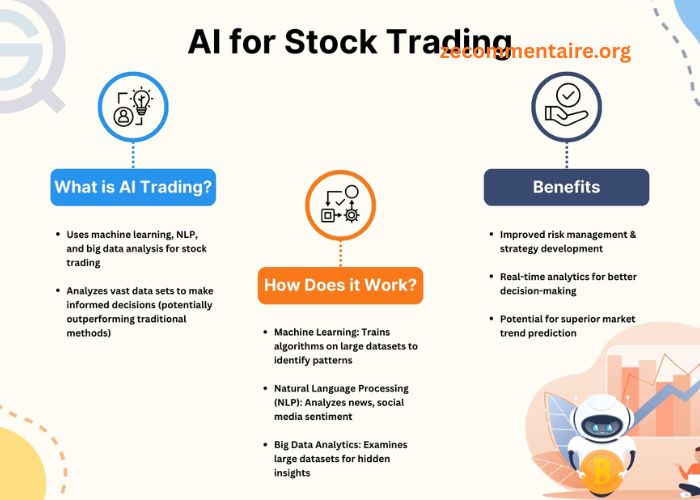Have you ever wondered how robots are changing the way we work? Across many industries, robots are doing more than just simple tasks. They are helping businesses save time, reduce costs, and create new ideas.
This change is not just about machines doing human jobs. It’s also about helping people do their jobs better. Let’s take a closer look at how robotics is reshaping industries and why it matters for the future of work.
Manufacturing: Speed and Precision
Robotics has transformed manufacturing more than any other industry. In factories today, robots build cars, assemble electronics, and package goods with high accuracy. They work around the clock without getting tired or making mistakes.
This high level of precision improves product quality. Fewer errors mean less waste and better results. Manufacturers also benefit from faster production times. This helps companies meet customer demands more quickly and stay competitive.
Advanced automation plays a big role in these changes. Smart robots can now adjust their actions using sensors and data. This makes production lines more flexible and efficient. Some systems even learn from experience and improve over time.
Manufacturing jobs evolve as workers concentrate on programming, monitoring, and machine maintenance, leading to new skill development opportunities and improved conditions.
Healthcare: Better Care with Robotic Help
In healthcare, robots are helping doctors and nurses care for patients. Surgical robots can perform complex operations with great accuracy. These procedures often lead to faster recovery and fewer problems.
Robots also assist with daily hospital tasks. They move supplies, clean rooms, and deliver medicine. This gives medical staff more time to focus on patient care. In some hospitals, robotic systems even help with physical therapy.
Advanced automation supports faster testing and diagnosis. For example, robotic labs can process many samples quickly and with fewer mistakes. These systems help doctors get results faster, so patients receive treatment sooner.
Innovation in medical robotics is also growing. Developers are creating robots that can monitor patient health at home. These machines can alert doctors if a problem is detected. As a result, patients can get help before their condition worsens.
Overall, robotics in healthcare improves safety, speed, and care quality. It also reduces the stress on medical workers, making hospitals more efficient places.
Agriculture: Smarter Farming with Robots
Farming is changing fast thanks to robotics. Today’s farmers use machines to plant seeds, water crops, and harvest food. These robots can cover large areas with less effort and more precision.
Smart sensors help these machines decide where and how much to water or fertilize. This reduces waste and protects the environment. Robots also help monitor crop health. They can find problems early, such as pests or diseases.
With advanced automation, farmers can manage fields from a distance. They can use drones or robots controlled by phones or computers. This saves time and lowers labor costs. The food produced is more consistent in quality.
One great example is the use of robotics in student competitions like FTC Robots. These projects inspire young minds to create tools that may one day help farms around the world.
As technology advances, farming will become more efficient and sustainable, creating new job paths in technology and science. This is an exciting future for food production and its workforce.
Retail and Warehousing: Faster Service, Smarter Stores
Retail and warehousing are also seeing big changes with robotics. In warehouses, robots move products from shelves to packing stations. They help speed up orders and reduce mistakes. This is especially useful for online shopping.
Stores are also using robots to check stock levels. Some robots can scan shelves and alert staff when items run low. This keeps stores well-stocked and helps customers find what they need.
Advanced automation supports better supply chain management. Robots can track products from the factory to the store. This allows managers to make smarter decisions about inventory and delivery.
In some stores, robots even help customers directly. They can answer questions, show product locations, or clean the floors. These robots help staff spend more time with customers.
As robots handle more basic tasks, retail workers can focus on customer service and sales. This shift improves both the shopping experience and business performance.
Construction: Building Smarter and Safer
Robots in construction are helping build faster and safer. Machines can now lay bricks, pour concrete, and do heavy lifting. These tasks are done with great precision and speed.
Advanced automation also improves safety. Robots can work in dangerous areas where people could be at risk. For example, some machines inspect tall buildings or tunnels. They send back images and data for engineers to review.
Drones are also part of construction robotics. They help with mapping, planning, and checking work progress. This saves time and makes sure projects stay on schedule.
These changes mean fewer delays and lower costs. At the same time, workers are learning to manage and operate these high-tech tools. This leads to better training and safer job sites.
The result is higher-quality buildings and more efficient construction processes. Robotics is helping create structures that are stronger, smarter, and built to last.
Logistics and Transportation: Moving Things with Precision
Robotics has greatly improved logistics and transportation. Automated systems sort and move packages quickly in shipping centers. This speeds up delivery and reduces human error.
Self-driving vehicles are being tested for deliveries and even public transport. These cars and trucks use sensors and software to travel safely and on time. While not yet common, they show great promise.
Advanced automation helps track shipments in real time. This gives customers updates and helps companies plan better. It also reduces lost packages and delays.
In airports and train stations, robots assist with luggage and guide travelers. These machines offer help in many languages and improve travel experiences.
As robotics continues to grow in this field, goods and people will move more efficiently. This helps businesses run smoother and improves customer satisfaction.
A New Era of Innovation with Robotics
Robotics is reshaping how industries work, bringing new levels of speed, accuracy, and creativity. Across sectors like healthcare, farming, construction, and retail, robots solve problems and open innovation doors. Workers are also gaining new roles as they adapt to this technology.
Advanced automation makes many tasks easier and more reliable. It improves safety, lowers costs, and enhances service. At the same time, it inspires the next generation to dream up even better tools for the future.
The age of robotics is not just coming – it’s already here. And it’s changing the way we live and work for the better.
Check out more articles on our blog for more exciting stories and ideas.





